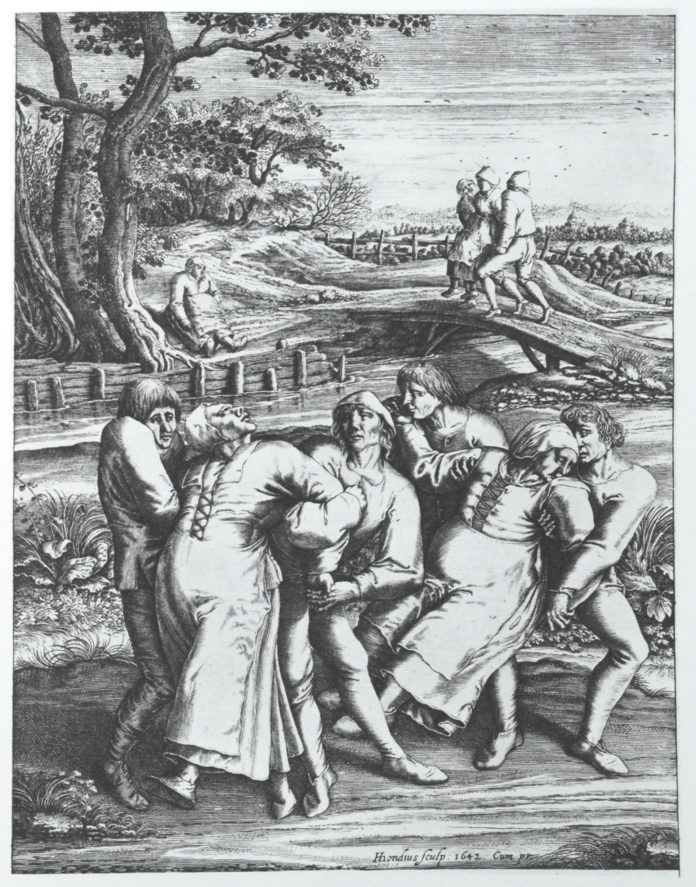Dancing mania (aka dancing plague, choreomania, St John’s Dance and historically St. Vitus’ Dance) was a phenomenon that occurred primarily in mainland Europe between the 14th and 17th centuries. Groups of people, sometimes thousands at a time danced uncontrollably and bizarrely. They would also scream, shout, and sing, and claim to have visions or hallucinations. The mania affected men, women, and children, who danced until they collapsed from exhaustion. One of the first major outbreaks was in Aachen, Germany, in 1374, and it quickly spread throughout Europe.
The most well-known outbreak occurred in Strasbourg, France in 1518. Four hundred people took to dancing for days without rest, and, over the period of about one month, some dying from heart attack, stroke, or exhaustion.
There are several explanations for the cause of dancing plague but the most plausible appears to be mass psychogenic illness (MPI): a manifestation of mass hysteria that is often preceded by extreme levels of psychological distress. Historian John Waller states that famine had been prevalent in the region for some time. Mass deaths followed from malnutrition, and those who survived were forced to kill their farm animals, take out loans, and perhaps even beg in the streets. In addition to food shortages, diseases such as smallpox, syphilis, leprosy, and “the English sweat” (a new disease) afflicted the populace, as well as “spiritual despair on a scale unknown for generations.”
Image: By Pieter Bruegel the Elder – Pieter Bruegel d. Ä. – Das gesamte graphische Werk. Wien-München: Schroll [o. J.], Abb. Nr. 124 (Scan durch H.-P.Haack, Leipzig), Public Domain, https://commons.wikimedia.org/w/index.php?curid=3307982







